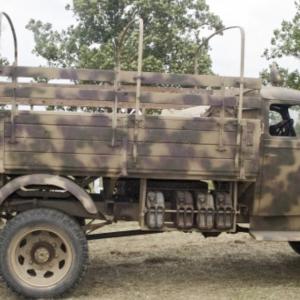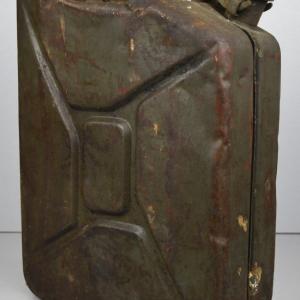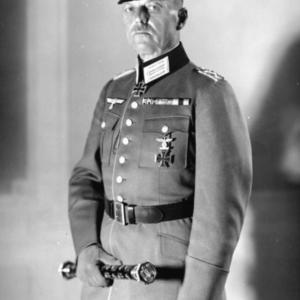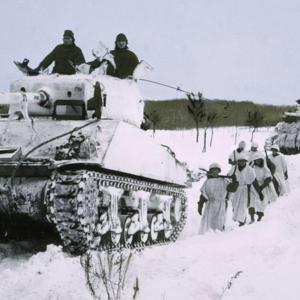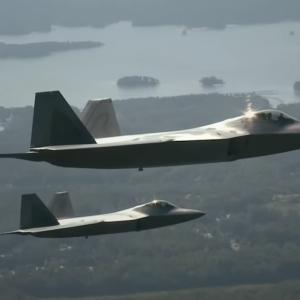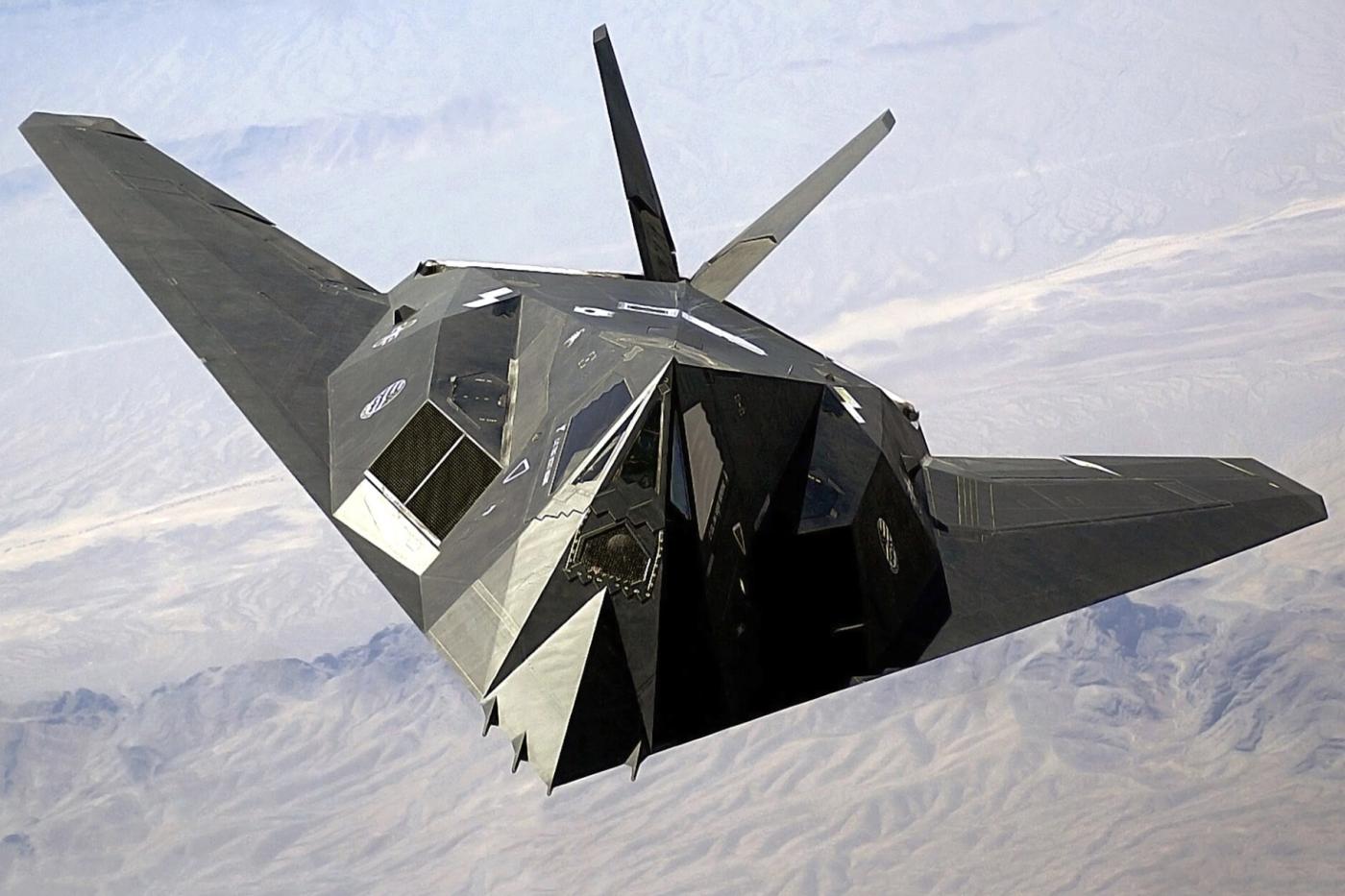
F-117 Night hawk
The F-117 Nighthawk is one of the most iconic and influential military aircraft of the late 20th century: the United States’ first operational aircraft designed around low observability (stealth) rather than conventional speed or maneuverability. Its appearance—angular, faceted surfaces and a bat-like silhouette—became shorthand for stealth in the public imagination. Behind that unusual look was a deliberate engineering tradeoff: reduction of radar return above almost everything else, which allowed the Nighthawk to penetrate well-defended airspace and deliver precision munitions with much lower risk than non‑stealth aircraft.
The F-117’s roots lie in Lockheed’s Skunk Works. The “Have Blue” demonstrator program in the late 1970s proved the concept, and Lockheed’s Advanced Development Projects (Skunk Works) turned that into the production F-117. The Skunk Works organization that produced it was led by experienced aircraft designers; Kelly Johnson was the legendary earlier figure in Skunk Works history, and Ben Rich was a key leader during the era when stealth moved from concept to production. Lockheed (later Lockheed Martin, after corporate changes in the 1990s) was the prime contractor; much of the design, development and final assembly took place within the Skunk Works facility and at Palmdale, California. Numerous subcontractors supplied components, avionics, and systems, but Lockheed/Lockheed Martin was the company associated with the aircraft’s creation and manufacture.
Production totals are small by modern fighter standards. Official public reporting historically lists a production run on the order of roughly sixty airframes: two initial prototypes and about fifty‑nine production examples (sources vary slightly depending on whether prototypes are counted). The F-117 was never built in the hundreds because it was a highly specialized strike asset built primarily for stealth penetration, not for massed air superiority or general-purpose use.
As for active service, the F-117 was declared operational in the 1980s and had a significant combat record through the 1990s and early 2000s. The U.S. Air Force officially retired the Nighthawk from front-line service in 2008. Since retirement, a small number of F-117s have been retained in various non‑frontline roles (storage, testing, occasional flights at restricted facilities), but the type is no longer part of standard operational squadrons for combat deployments. The precise number kept flying in niche roles is limited and not openly published in detail; publicly available information indicates only a handful remain flyable for testing, training, or storage/maintenance purposes rather than as an active combat inventory.
Armament and weapon systems reflect the airplane’s mission: stealthy, precision strikes against high-value, heavily defended targets. The F-117 carried its weapons internally to preserve low observability. Typical payloads were precision-guided bombs rather than air-to-air missiles: laser‑guided bombs (such as Paveway variants) and, later, GPS‑guided JDAM (Joint Direct Attack Munition) kits became common. The aircraft’s internal bays were sized for 500‑ to 2,000‑pound class guided bombs; common loadouts in combat used one or two large precision weapons or multiple smaller guided bombs depending on the mission. The F-117’s own avionics suite centered on navigation, targeting, and weapons release systems tied to precision munitions; it was not designed as a dogfighter and did not carry an internal cannon or air-to-air missile packages for conventional fighter engagements.
Performance and flight characteristics emphasize stealth and precision over speed. The F-117 is a subsonic aircraft: its top speeds are below Mach 1, with commonly cited maximum speeds in the roughly 600–630 mph (about 960–1,015 km/h) range—fast enough for its strike role but not supersonic. Service ceiling figures are high—on the order of forty thousand feet plus—allowing altitude flexibility for approach and egress. Range and combat radius are adequate for deep-strike missions with aerial refueling available when needed; published combat radius figures commonly cited are on the order of a few hundred nautical miles from base (typical combat radius values fall near 400–600 nautical miles depending on load and mission profile), and ferry range with external support and tanks naturally extends that. The F-117’s design necessitated a sophisticated fly-by-wire flight control system because its stealth shaping produced inherently unstable aerodynamics; the computer flight controls made the aircraft flyable and controllable in operational conditions. Stealth measures—faceted shaping in the original design, specialized radar-absorbing materials, and careful management of heat and infrared signatures—were the primary performance enhancers in a tactical sense.
The main uses for which the F-117 was built are straightforward: penetrate dense, integrated air defense systems and deliver precision ordnance to high-value targets with reduced risk to aircrews. It was optimized for night and precision strike operations and became famous for opening campaigns by hitting key command, control, and air defense nodes. Its combat debut precedents included operations where stealth could remove or disrupt the enemy’s ability to detect and engage attacking formations, enabling follow-on forces to operate more safely. Over its operational life the F-117 flew missions in several conflicts where stealth’s role was decisive in the early stages of strike campaigns.
Cost was high relative to conventional fighters, as is typical for a pioneering, specialized platform with advanced materials and extensive stealth treatments. Unit procurement and program-cost numbers vary with how they are measured (flyaway cost vs. total program acquisition cost vs. adjusted-for-inflation figures). Historically quoted figures put the per-aircraft procurement and associated development costs in the many tens of millions (1980s–1990s dollars), and a full program cost that includes development, testing, production tooling, and logistics support raises the effective per‑aircraft investment substantially. In short, the F-117 was expensive on a per-plane basis compared with mainstream fighters, reflecting its classified technologies and the research-and-development investments required to field an operational stealth aircraft for the first time.
Is the F-117 “the finest of its kind”? That depends how you define “finest.” In its era the F-117 was unparalleled at what it was designed to do: low-observable penetration and precision strike. It set the standard and proved that stealth could be operationally decisive, which in turn reshaped aircraft design philosophy worldwide. However, it was also a product of tradeoffs: limited payload compared with larger strike platforms, subsonic speed, and extensive maintenance requirements to preserve its stealth coatings and materials. Later generations of stealth aircraft—such as stealthy multi-role fighters and bombers that combine stealth with supersonic performance, improved sensors, networked situational awareness, and larger weapons loads—surpass the F-117 in overall capability and flexibility. So while the F-117 is arguably the finest of its kind as the first dedicated stealth attack airplane and a highly effective precision‑strike tool in its time, subsequent platforms took the stealth concept further and integrated it into more versatile airframes.

